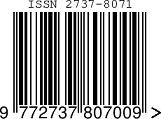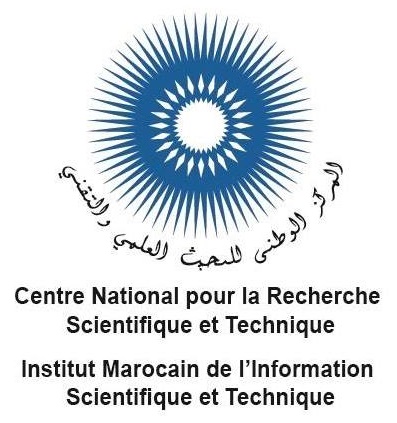An Influence of Recycled Concrete Aggregate and Treated Waste Water Containing 50% GGBS Content in Light weight Concrete Mixes
Keywords:
Natural Aggregate , Recycled Aggregate , Concrete Waste , Treated waste water , GGBSAbstract
Extraction of natural aggregates is expensive and has a huge impact on the environment. The main issues in sand and gravel mining are the large areas that are affected, ground water level changes, illegal mining, unsuitability of desert and marine sand, and costs of transport. Metallurgical waste can be used as a substitute for natural aggregates, the waste is recycled and the use of natural aggregates is reduced. Environmental sources are diminishing every day and hence, usage of available sources become even more important..The novelty of this research reports the experimental examination of applying Recycled Aggregate (RA), Treated wastewater (TW) and GGBS in concrete. Four groups of mixes were developed (Groups NW, TW, NWG, and TWG) with each group consisting of four mixes, providing a total of 16 mixes. Group NW: 100% Natural Water (NW) with different percent ratio of RA contents Group TW: 100% Treated waste water (TW) with different percent ratio of RA contents Group NWG: 100% Natural Water (NW) and 50% GGBS (replacement with Portland cement [PC]) with different percent ratio of RA content Group TWG: 100% TW and 50% GGBS (replacement with PC) with different percent ratio of RA contents The test result are compressive strength tests after 1,7,15, and 28 days. The statistical analysis results showed that the effect on concrete compressive strength was only significant when 20% RA was used in concrete exposed to TWW with 50% replacement of GGBS.
Downloads
References
Nagar, B.; Bhargava, V.P. Experimental study on effects of sludge waste in concrete. Int. J. Eng. Sci. Res. Technol. 2016, 5, 54–63. [Google Scholar]
Kubissa, J.; Koper, M.; Koper, W.; Kubissa, W.; Koper, A. Water demand of concrete recycled aggregates. In Proceedings of the Procedia Engineering; Elsevier Ltd.: Amsterdam, The Netherlands, 2015; Volume 108, pp. 63–71. [Google Scholar]
Butler, L.; West, J.S.; Tighe, S.L. The effect of recycled concrete aggregate properties on the bond strength between RCA concrete and steel reinforcement. Cem. Concr. Res. 2011, 41, 1037–1049. [Google Scholar] [CrossRef]
Safiuddin, M.; Alengaram, U.J.; Salam, M.A.; Jumaat, M.Z.; Jaafar, F.F.; Saad, H.B. Properties of high-workability concrete with recycled concrete aggregate. Mater. Res. 2011, 14, 248–255. [Google Scholar] [CrossRef][Green Version]
Sowmya T,Srikanth. M.Naik, Dr. B.V.Venkatasubramanya., Application of Recycled Aggregate in construction , 2000. The advanced industrial material of the 21st century. Metall Mater Trans B 2000;26:417e37.
Ammon Katz., Properties of Concrete Made with Recycled Aggregate from Partially Hydrated Old Concrete, October 2002, Cement and concrete research 33 (2002),pp 703-711.
Shailendrakumar, Dr A. K.Choudhary , Dr. B.P. Verma., Prediction of Splitting Tensile Strength of Recycled Aggregate Concrete ,2004. Construct Build Mater 2001;24(3):29e9.
K V Chaurpagar, Study of polymer Modified Recycled Aggregate Concrete with Steel Fibres, 2004. Case Study Construction Mater 2004;13:e00367.
M C Limbachiya, a Kolouris, J J Roberts and A N Fried.,Performance of Recycled Aggregate Concrete 2004 . Construct Build Mater 2004;146:455e63.
Sudhir P . Patil, Ganesh S. Ingle Prashanth D. Sathe., Recycled Coarse Aggregate , 2013 . ACI Mater J 2013;92(3):291e5.
V.P.Kulkarni (2014), Study on compressive strength of concrete by using treated domestic waste water as mixing and curing of concrete.International Journal of Research in Engineering and Technology.
R.A. More, S.K. Dubey (2014), Study on effect of different types of water on compressive strength of concrete, International Journal of Research in Engineering and Technology, PP-40-50.
E.W. Gadzama(2015), Study on the effect of using sugar factory waste water as a mixing water on the properties of normal strength concrete. International Journal of Science, Environment. PP813-825.
IS-456 - 2000-Plain and Reinforced Concrete Code of Practice.
IS-516-1959 -Methods of tests for Strength of concrete.
IS-12269 - 1987- Specifications for 53 grade OPC
IS 2386 (Part 1, 3 & 4) - 1963, Method of testing of aggregates for concrete.
IS 1199-1959 - Method of sampling and analysis of concrete.
Safi B, Saidi M, Aboutaleb D, Maallem M. The use of plastic waste as fineaggregate in the self-compacting mortars: effect on physical and mechanical properties. Construct Build Mater 2013;43:436e42

Downloads
Published
How to Cite
Issue
Section
License
Copyright (c) 2024 Ms.Bandhavya G B Gowda

This work is licensed under a Creative Commons Attribution 4.0 International License.
Copyright on any article in the International Journal of Engineering and Applied Physics is retained by the author(s) under the Creative Commons license, which permits unrestricted use, distribution, and reproduction provided the original work is properly cited.
License agreement
Authors grant IJEAP a license to publish the article and identify IJEAP as the original publisher.
Authors also grant any third party the right to use, distribute and reproduce the article in any medium, provided the original work is properly cited.
Most read articles by the same author(s)
- Ms.Bandhavya G B Gowda, Influence of River Water and Treated Industrial Sewage Water Quality on Compressive Strength of Concrete with Sawdust Ash as Partial Replacement of Cement , International Journal of Engineering and Applied Physics: Vol. 2 No. 3: September 2022
- Ms.Bandhavya G B Gowda, Prashath S, Sandeep K, Bindhushree G B, Optimizing Green Concrete Brick Production with Rice Husk and Glass Waste: A Path to Sustainable Building , International Journal of Engineering and Applied Physics: Vol. 4 No. 3: September 2024














